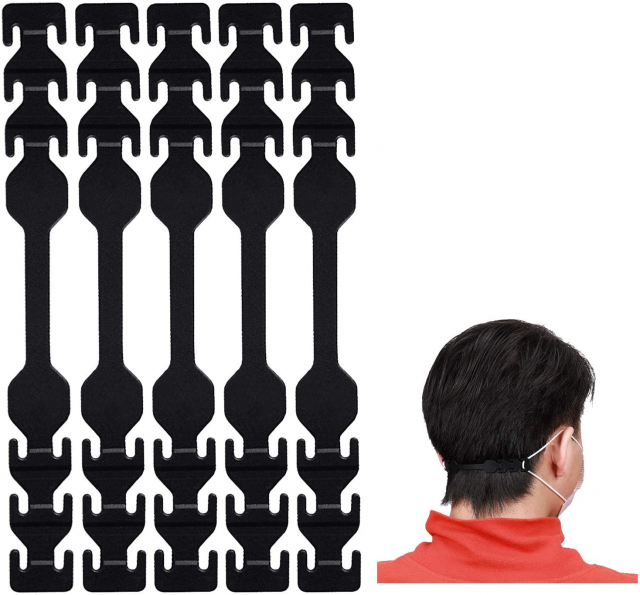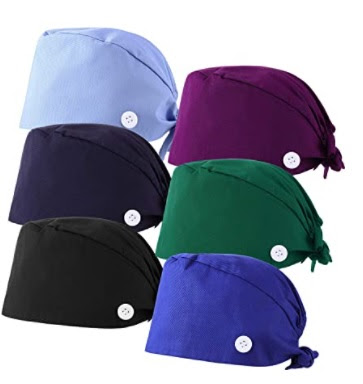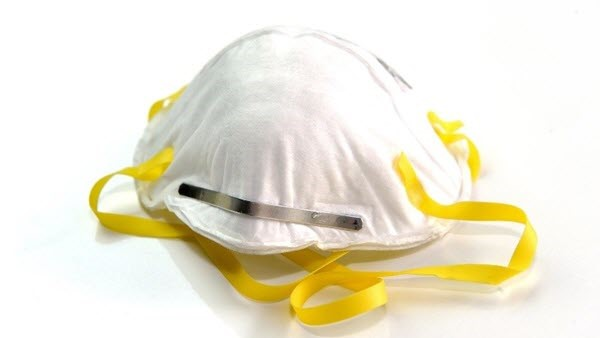Link to the actual paper ..................
Experimental investigation of indoor aerosol dispersion and accumulation in the context of COVID-19: Effects of masks and ventilation: Physics of Fluids: Vol 33, No 7 (scitation.org)
"The baseline filtration characteristics for the various masks tested in this study indicate that more than 50% of aerosols (polydisperse, 1 μm mean diameter) can pass through the material of commercially available cloth and surgical masks in ideal conditions (zero leakage due to fit), whereas ideal filtration efficiency is 95% (or higher) in the case of KN95 and R95 masks. Flow visualizations and velocity measurements in the near-field (immediate vicinity of the face) indicate that none of the tested masks is performing at their ideal filtration efficiencies due to leakages through gaps in the fit of the mask. This occurs around the cheeks, below the jaw, and at the bridge of the nose, with the latter being the most significant for all masks. Aerosols are seen to escape through these leakage sites in the form of concentrated particle clouds that do not mix quickly with the ambient air on account of relatively low flow velocities and hence low levels of turbulent mixing. The degree of leakage varies between masks, with high-efficiency masks, such as the KN95, performing better. Factors affecting leakage at the mask perimeter include mask geometry, strap style and elasticity, and whether or not the mask is equipped with a deformable nose piece that can be tightly shaped to the nose. Furthermore, although the present study does not characterize the effectiveness of masks during inhalation, the aforementioned loss of filtration efficiency due to perimeter leakage is also expected to be present during inhalation, although it is to a lesser extent due to the improved sealing effect produced by the negative pressure difference relation to the ambient."
I will add to the above, an improper fit, or seal, can also occur with N95 masks. It's all about the seal. Our surgical grade 3 masks all come with a metal strip, which allows a FAR better seal at the nose, than surgical masks that do not come with a metal strip. Also, a tighter fit with surgical masks is easily accomplished by making a loop in the strap. Boom, easy fix that anyone can do. But not going to help much for those that wear their masks on their chin, below their nose, etc.
Experimental investigation of indoor aerosol dispersion and accumulation in the context of COVID-19: Effects of masks and ventilation: Physics of Fluids: Vol 33, No 7 (scitation.org)
"The baseline filtration characteristics for the various masks tested in this study indicate that more than 50% of aerosols (polydisperse, 1 μm mean diameter) can pass through the material of commercially available cloth and surgical masks in ideal conditions (zero leakage due to fit), whereas ideal filtration efficiency is 95% (or higher) in the case of KN95 and R95 masks. Flow visualizations and velocity measurements in the near-field (immediate vicinity of the face) indicate that none of the tested masks is performing at their ideal filtration efficiencies due to leakages through gaps in the fit of the mask. This occurs around the cheeks, below the jaw, and at the bridge of the nose, with the latter being the most significant for all masks. Aerosols are seen to escape through these leakage sites in the form of concentrated particle clouds that do not mix quickly with the ambient air on account of relatively low flow velocities and hence low levels of turbulent mixing. The degree of leakage varies between masks, with high-efficiency masks, such as the KN95, performing better. Factors affecting leakage at the mask perimeter include mask geometry, strap style and elasticity, and whether or not the mask is equipped with a deformable nose piece that can be tightly shaped to the nose. Furthermore, although the present study does not characterize the effectiveness of masks during inhalation, the aforementioned loss of filtration efficiency due to perimeter leakage is also expected to be present during inhalation, although it is to a lesser extent due to the improved sealing effect produced by the negative pressure difference relation to the ambient."
I will add to the above, an improper fit, or seal, can also occur with N95 masks. It's all about the seal. Our surgical grade 3 masks all come with a metal strip, which allows a FAR better seal at the nose, than surgical masks that do not come with a metal strip. Also, a tighter fit with surgical masks is easily accomplished by making a loop in the strap. Boom, easy fix that anyone can do. But not going to help much for those that wear their masks on their chin, below their nose, etc.






